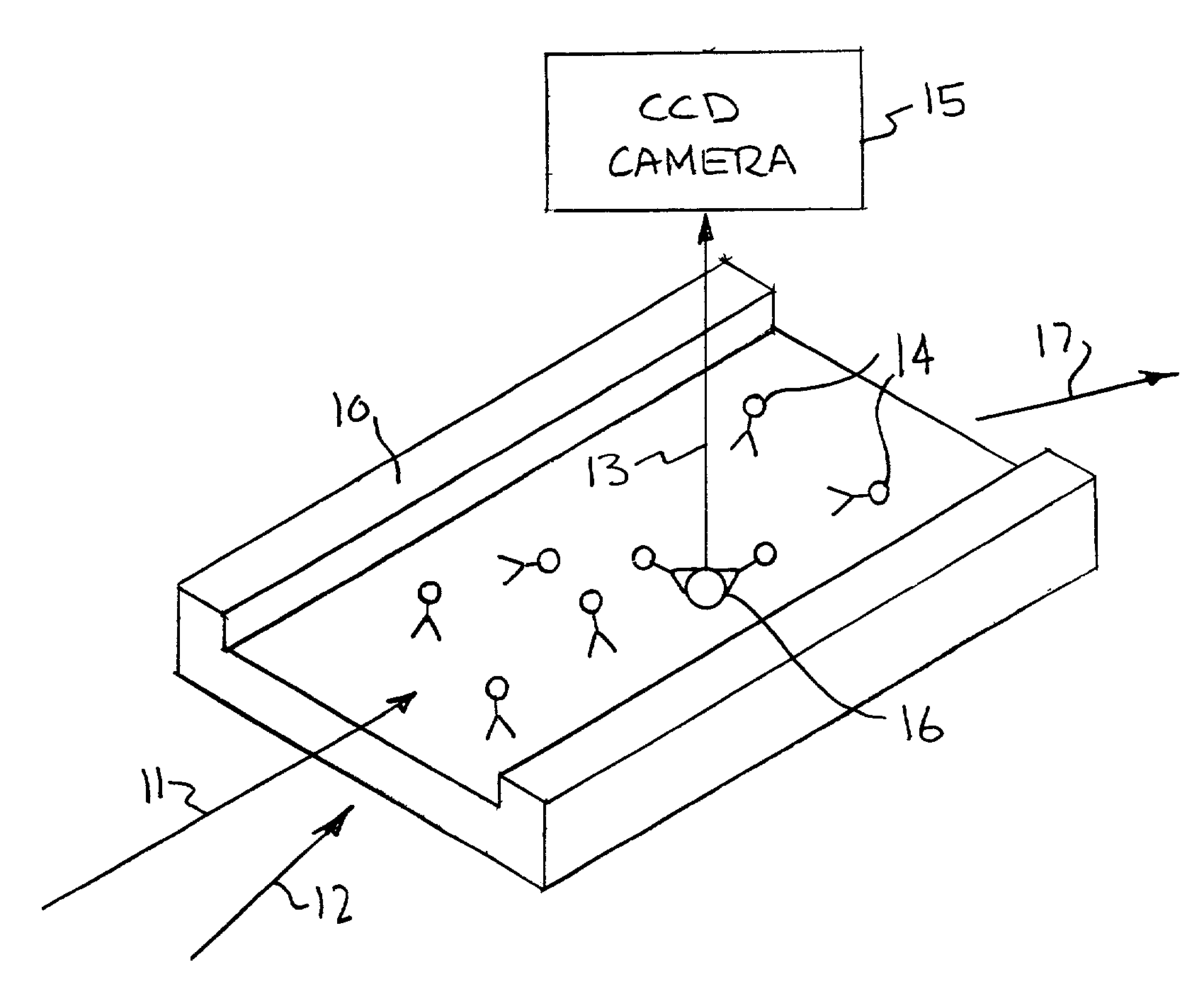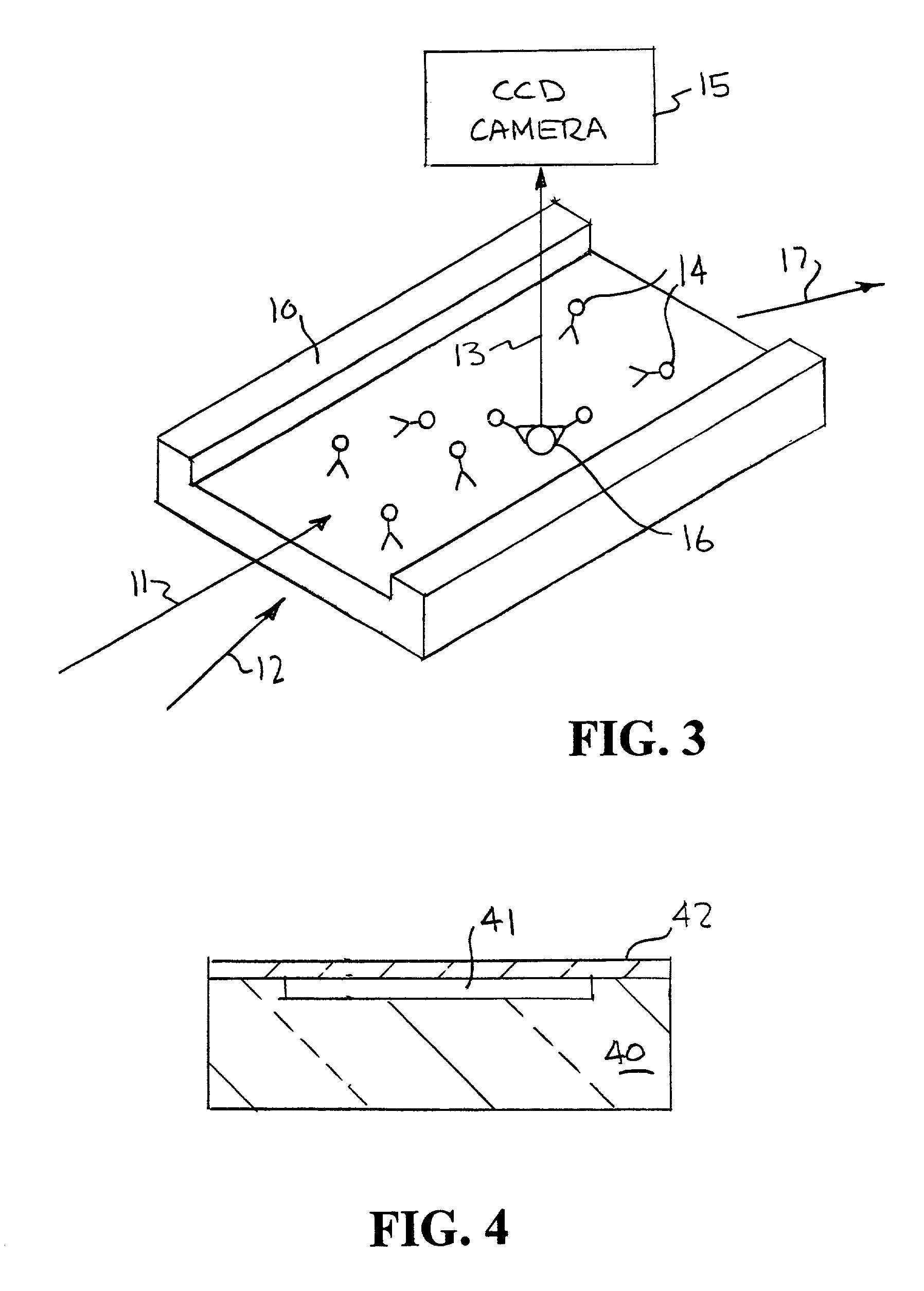High-throughput, dual probe biological assays based on single molecule detection
a biological assay and single molecule technology, applied in the field of high-throughput, dual probe biological assays based on single molecule detection, can solve the problems of false positive, impractically long measurement time, limited results, etc., and achieve the effects of extending the sensitivity into the attomolar range, and reducing the emission of other regions
- Summary
- Abstract
- Description
- Claims
- Application Information
AI Technical Summary
Benefits of technology
Problems solved by technology
Method used
Image
Examples
Embodiment Construction
[0045]An example of the way fluorescent-labeled antibodies are used to form what is known as a one-color sandwich type assay is shown in FIG. 1. Here two different probes, defined as antibodies, oligonucleotides, or proteins, for the target antigen are used. One of the antibodies is attached to a solid surface (20), usually the wall of the container or well plate that holds the sample. The second antibody has a fluorescent molecule attached to it (21). The sample (usually in liquid form) is introduced into container with the labeled antibody. The sample is given time (usually 10s of minutes) to allow the target antigen (if present) to bind (incubate) with the antibodies. After the incubation period the free unattached labeled antibody molecules are washed away with some washing solution. The container is then optically examined to see if any of the labeled antibody remains. If the target antigen had been present it would both have bound to the surface (with the first antibody) and w...
PUM
 Login to View More
Login to View More Abstract
Description
Claims
Application Information
 Login to View More
Login to View More - R&D
- Intellectual Property
- Life Sciences
- Materials
- Tech Scout
- Unparalleled Data Quality
- Higher Quality Content
- 60% Fewer Hallucinations
Browse by: Latest US Patents, China's latest patents, Technical Efficacy Thesaurus, Application Domain, Technology Topic, Popular Technical Reports.
© 2025 PatSnap. All rights reserved.Legal|Privacy policy|Modern Slavery Act Transparency Statement|Sitemap|About US| Contact US: help@patsnap.com



